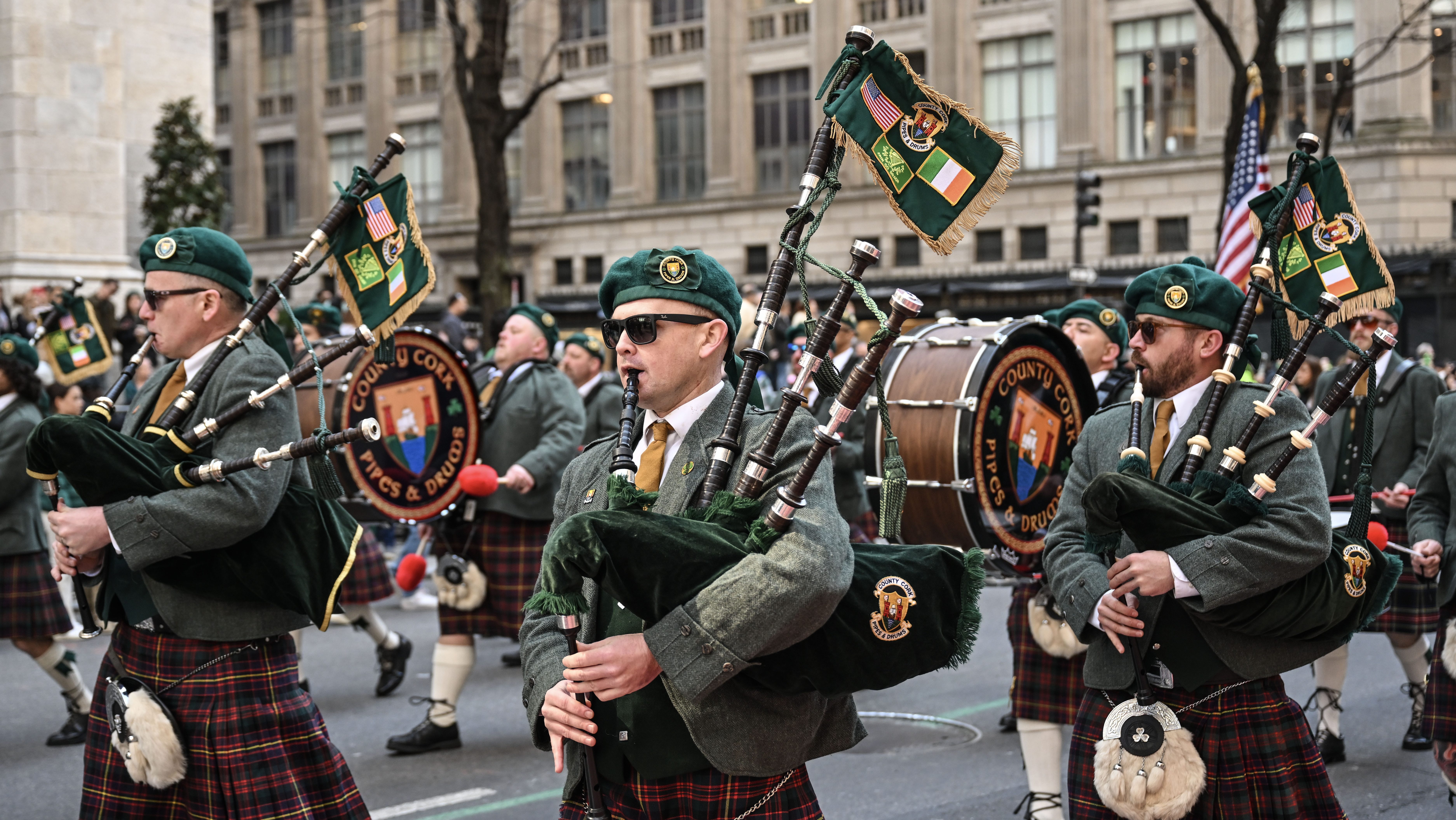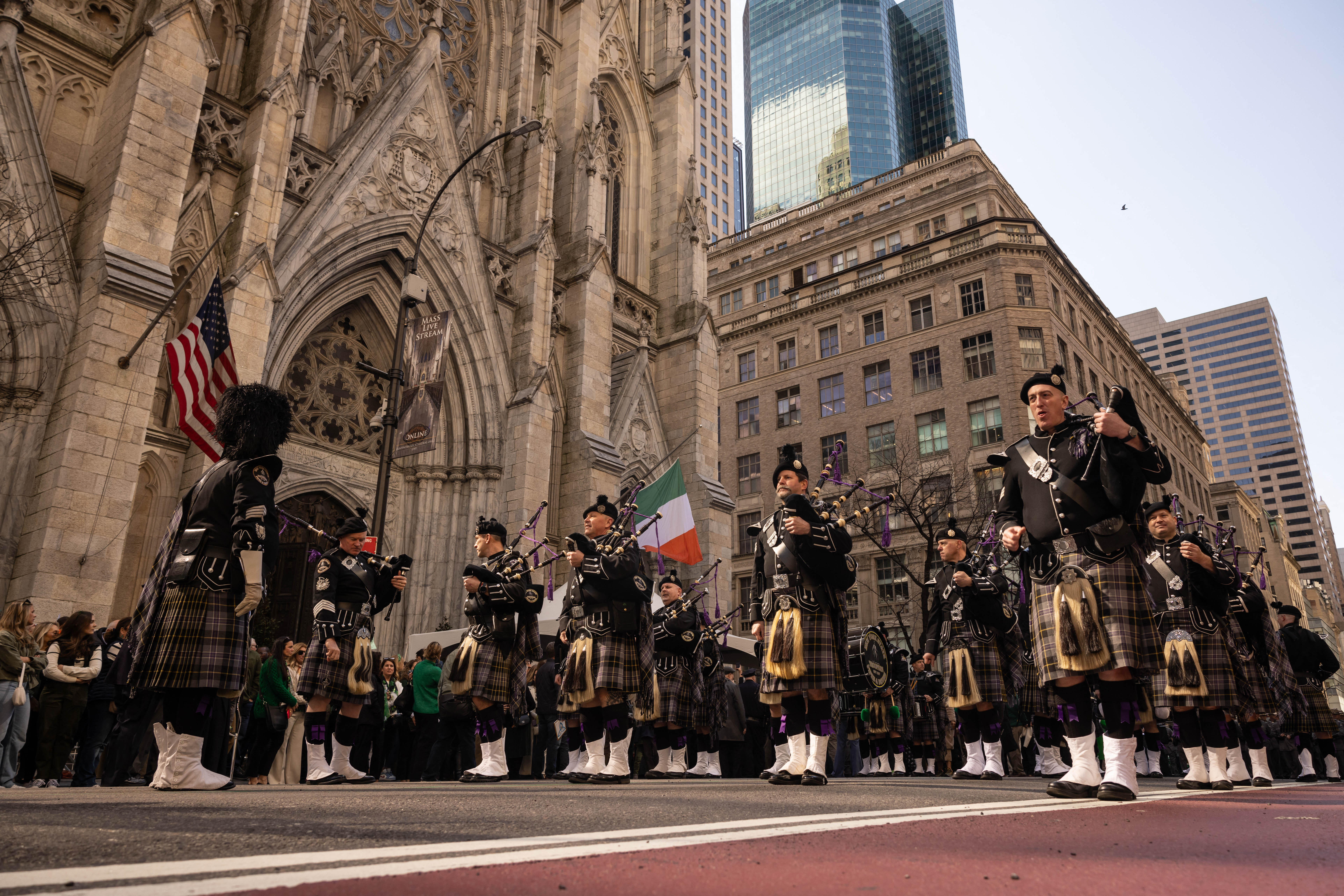The bagpipes will be blaring on Fifth Avenue this St. Patrick’s Day. And the plaintive, eerie notes remind us of the tragedies in Irish history.
The words of one song, "The Minstrel Boy," come to mind:
"The Minstrel Boy to the war is gone—
In the ranks of death you’ll find him.
His father’s sword he has girded on
And his wild harp slung behind him.."
But Irish history is filled with happy moments too. And not the least of what many of the Irish treasure about St. Patrick’s Day is the fact that they had the good fortune to come to this country.
St. Patrick's Day Parade
World's biggest, oldest St. Patrick's Day Parade marches up Fifth Avenue
"The St. Patrick’s Day Parade celebrates pride in our country, our church and ourselves," Brian O’Dwyer, a prominent Irish-American son of New York, told me. "It’s indeed a celebration of the immigrant experience."
Out of turbulent times in their native country, many Irish families fled here two centuries ago. Protestant Irishmen served courageously in Washington’s army against the British. In the wake of the potato famine in the mid-1840s thousands of Catholic Irish emigrated to America. Underlying both migrations were economic, political and religious factors.
"As second generation Irish were assimilated into American society and achieved success in a variety of areas, the Irish took on a new self identity," Historian Jay Dolan wrote. "This could most visibly be seen in the parades they sponsored in the early years of the 20th Century."
The Irish have a love affair with America and New York -- and it goes back a long way.
I have watched this parade for more than half a century. What has characterized the parade in my time has been the prominence of politicians. Mayors and Governors and lesser office holders have dominated the reviewing stand. The archbishop of New York, flanked by other top officials of the church, have reviewed the parade from the steps of St. Patrick’s Cathedral. And the leading Catholics among the marchers stop at the cathedral to kiss the archbishop’s ring.
Three years out of four there’s a city, state or national election in the offing. The candidates often march, too -- although they’re not always recognized in the early stages of a campaign. But they wave at the crowds anyway.
New Yorkers love to parade -- and they love watching. It seems to be in our DNA.
The first St. Patrick’s Day Parade took place not in Ireland but in New York, as Irish soldiers serving in the English military marched through various New York City neighborhoods on March 17, 1762. It was a way of connecting to their Irish roots. There were various organizations that helped organize parade units, like the Friendly Sons of St. Patrick and the Hibernian Society.
According to the History Channel, corned beef and cabbage became a St. Patrick’s Day staple in curious cross-cultural match. Irish immigrants living on the Lower East Side, for economic reasons, substituted corned beef for their traditional dish of Irish bacon and cabbage. They borrowed the corned beef from their Jewish neighbors.
As for that mournful hymn, "The Minstrel Boy," a last verse was written during the Civil War--- and it reflects the buoyant spirit of this people.
"The Minstrel Boy will return we pray
When we hear the news we all will cheer it.
The Minstrel Boy will return one day,
Torn perhaps in body, not in spirit."
This article was first published in 2010.



